We delight in discussing the less transparent activities of the government and military. The American Central Intelligence Agency serves as the primary source of content for these conversations.
The CIA has a habit of appearing wherever there is instability, conflict, and political unrest. Despite its reputation for dirty tricks, the Agency is allowed to use whatever tactics it sees fit to deal with any (whether they be real or perceived) threat to American interests.
If there is one thing we know about absolute power, it is that it corrupts absolutely, and if there is one thing we know about the CIA, it’s that all the secrets highlighted in today’s list are merely the tip of the iceberg.
Here are 25 Insane CIA Secrets That Will Leave You In Shock.

The CIA Used Eerily Accurate Psychics
 https://www.cia.gov/library/readingroom/docs/CIA-RDP96-00787R000700110003-2.pdf
https://www.cia.gov/library/readingroom/docs/CIA-RDP96-00787R000700110003-2.pdf Whether you believe in psychics or not doesn’t matter – what matters is that the CIA used them – and found them quite scary… The CIA primarily recruited psychics for “remote viewing”—that is, getting psychics to use their skills to peer inside sealed envelopes and buildings. Initially, the CIA conducted studies by placing photographs in sealed envelopes and asking psychics to describe them. Their responses were shockingly accurate. The CIA also managed to send a long-distance message to a psychic by scribbling it on a single sheet of paper, which the psychic read word for word from another building. In another experiment, the CIA programmed a computer in a shielded room to create a random line of 1s and 0s, which several psychics could reproduce accurately.
The psychics were even given access to confidential CIA documents. The psychics could describe the places where the documents were kept, the color of the papers, the topics, the sizes, and even the authors. One even described a construction crew working inside the building. The CIA finally concluded that remote viewing was a real phenomenon and were confident they could use it to spy on the enemy’s classified documents.
The CIA Also Took An Interest In Telekineses
 https://www.cia.gov/readingroom/document/cia-rdp96-00787r000700110003-2
https://www.cia.gov/readingroom/document/cia-rdp96-00787r000700110003-2 The CIA’s exploration extended beyond remote viewing, and included a fascination with telekineses and teleportation. Although there is limited declassified information on these experiments, indications suggest significant advancements were made. The CIA conducted and financially supported various experiments to assess the psychic capabilities of stage magician Uri Geller. In their most rigorously controlled test involving their most skeptical scientist, they still documented Geller’s capacity to bend a strip of metal by 10 degrees. However, their interest was not confined to Geller alone.
The CIA enlisted the services of other individuals with psychic talents, including a 13-year-old named Stephen, who attended the experiments with his parents. Much like Geller, Stephen demonstrated the ability to manipulate aluminium with his thoughts, prompting the CIA to conduct scientific examinations to understand the metal’s alterations. Furthermore, in a separate experiment, the CIA observed Jean-Pierre Girard’s capability to alter the thickness of a metal strip solely through the power of his mind without physically bending the metal.
The Spy Satellite Retrieval Operation
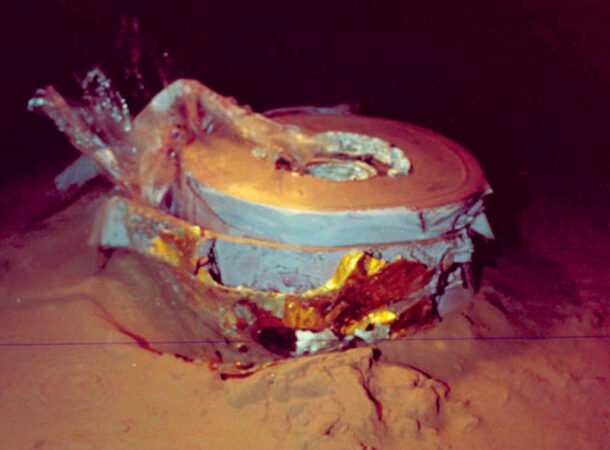 https://www.cia.gov/readingroom/collection/underwater-ice-station-zebra-recovering-secret-spy-satellite-capsule-16400-feet-below
https://www.cia.gov/readingroom/collection/underwater-ice-station-zebra-recovering-secret-spy-satellite-capsule-16400-feet-below When a “data package” went down in the Pacific Ocean in April 1972, the US Navy sent out the Trieste II Deep Sea Vehicle I (DSV-1) submersible, its most sophisticated deep-sea submersible at the time, to retrieve it. In reality, the so-called data package was a film capsule from an American photoreconnaissance or spy satellite referred to as HEXAGON.
According to official sources, the incident was caused by a malfunction. A parachute was scheduled to deploy after the film capsule, or “bucket,” reentered the atmosphere and passed over the primary reentry zone near the Hawaiian Islands. Instead, the parachute detached, and the bucket dropped into the sea, plummeting to a depth of around 16,400 feet (5,000 meters) on impact.
The CIA and Heroin
 http://www.motherjones.com/politics/1998/06/history-101-cia-drugs
http://www.motherjones.com/politics/1998/06/history-101-cia-drugs The aftermath of World War II was a perilous time for geopolitics. With half of Europe under Soviet control and the rest in economic decline, the race was on to grab as much of the continent as possible. The CIA’s biggest fear was that Italy and Sicily would fall to the Communists, and they did everything in their power to prevent it – including funding the Mafia. And it wasn’t just the Italian branch that they supported. Gangsters from Chicago and New York were recruited and dispatched to Sicily with money and the authority to basically do whatever they wanted. And what they wanted was to traffic heroin.
With the CIA’s assistance, they created labs and took over docks, launching a global heroin network that funded the Mafia for 25 years. The CIA even assisted them in exporting their goods and gaining complete control of Sicily while making their important players untouchable by other law enforcement groups. While it kept the Communists out, it also helped to make heroin the thriving business it is today.
The Pakistani DNA Collecting Drive
 http://www.guardian.co.uk/commentisfree/2012/may/27/cia-fake-vaccination-polio
http://www.guardian.co.uk/commentisfree/2012/may/27/cia-fake-vaccination-polio The May 2011 raid that eliminated Osama Bin Laden resulted from an insane amount of intelligence gathering and planning. A courier had been followed to the Abbottabad spot where Bin Laden was almost certainly hiding. But, before carrying out the raid, they wanted to be absolutely sure – and their particular method for obtaining said proof was questionable, to say the least.
The CIA hired a respected Pakistani doctor to set up a fake vaccination drive in town and, in the process, gathered thousands of blood samples from local children, including, as it turned out, Bin Laden’s. The whole idea worked, but there were repercussions. For one thing, the Pakistani government convicted Dr Shakil Afridi of treason and sentenced him to 33 years in prison. For another, the campaign has done irreparable harm to organizations that provide valid immunizations. Many people in the Middle East have profound mistrust of those who offer immunizations, and this ploy to help identify Bin Laden has only fueled those fears – especially in India, Nigeria, and Pakistan, where efforts to eliminate polio are ongoing.
The Stay-Behind Network
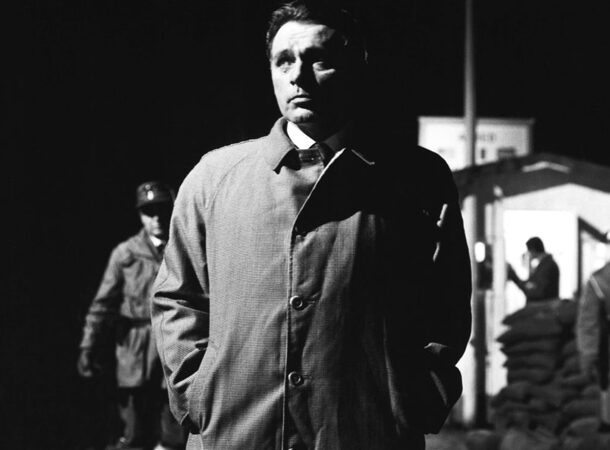 https://sgp.fas.org/eprint/naftali.pdf
https://sgp.fas.org/eprint/naftali.pdf According to Timothy Naftali of the University of Virginia, the US Central Intelligence Agency ran a “stay-behind” network of German spies between 1949 and 1955. They comprised two programs, the Kinitz in Southwestern Germany and the Pastime in Berlin – both were intended to supply intelligence sources behind enemy lines if the Soviets invaded West Germany.
Several stay-behind agents became problematic during the operation, with one group demonstrating “Nazi tendencies.” As a result, the CIA launched a campaign to “resettle” them in Canada and Australia, with the latter offering to cover their travel expenses while the US offered a resettlement bonus to those who resettled in Canada.
The Disposition Matrix
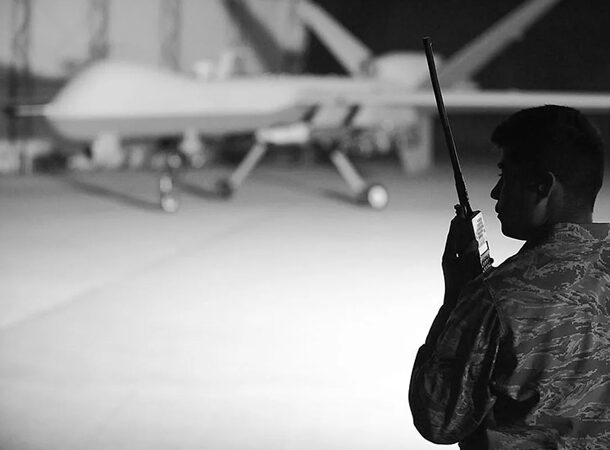 https://www.theguardian.com/world/2013/jul/14/obama-secret-kill-list-disposition-matrix
https://www.theguardian.com/world/2013/jul/14/obama-secret-kill-list-disposition-matrix The US government maintains a not-so-secret hit list, known as the “disposition matrix,” that includes the names, locations, and preferred ways of killing those considered enemies of the US. While the existence of the list is widely known, the names on it are not.
Barack Obama’s government selected the names during weekly meetings called “Terror Tuesday.” Obama was the only person who could approve the list. The names were supplied by US military and intelligence authorities and, on occasion, the British government. Once the suspects’ names were authorized, the military and CIA tracked them down and assassinated them with drone-launched missiles or clandestine special forces assaults. In rare cases, they detained and interrogated the targets. The vast majority were suspected jihadists from Somalia, Yemen, and Pakistan.
The CIA Made A Porno
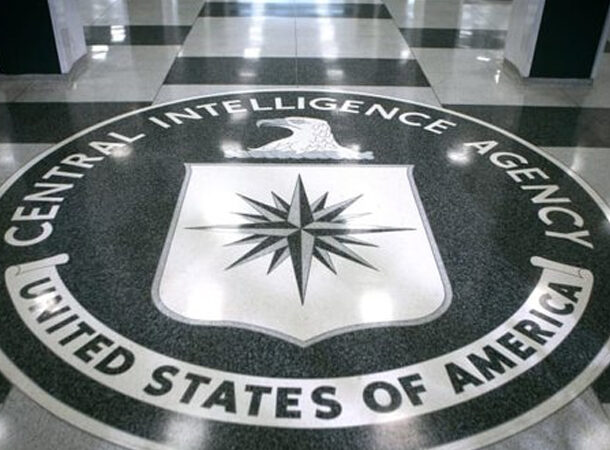 https://medium.com/war-is-boring/the-cia-and-kgb-tried-to-blackmail-this-world-leader-with-sex-tapes-927fc7ddbd48
https://medium.com/war-is-boring/the-cia-and-kgb-tried-to-blackmail-this-world-leader-with-sex-tapes-927fc7ddbd48 President Sukarno governed Indonesia from 1959 to 1966 when he was ousted by one of his generals, Suharto. Sukarno had been designated as a pro-Communist by the CIA, which meant there would surely be an attempt to depose him or make him look bad – but the strategy they devised was simply ridiculous.
The CIA made a pornographic video titled “Happy Days” with a Sukarno lookalike for distribution in Indonesia. The film was completed, and stills were taken, but for some reason (maybe common sense), it was never used. Bizarrely, this idea was revived shortly before the Second Gulf War when the CIA proposed producing a gay porno film featuring Saddam Hussein or Osama Bin Laden to discredit them in the eyes of their followers.
The Bay of Pigs Failure
 https://www.cia.gov/readingroom/collection/bay-pigs-release
https://www.cia.gov/readingroom/collection/bay-pigs-release The “Official History of the Bay of Pigs Operations,” authored by CIA staff historian Jack Pfeiffer and classified as top secret at the time of the author’s retirement, remains unfinished. Its fifth volume, regarded to contain severe scholarly flaws, was never published. However, reading Part 1 of Volume 1 reveals that the 1961 covert military campaign to depose Cuba’s Fidel Castro was – from the US perspective, a complete and utter disaster.
According to one account, the mission failed because it did not include any tactical air targets. According to a second account, President John F. Kennedy called off the second strike because he had forgotten it had been planned.
Volume 4 focuses on the perspectives of CIA personnel directly involved in the Bay of Pigs operation. Their point of view can be summed up in the phrase “bum rap,” as they were vilified as scapegoats for a political choice that jeopardized the mission’s success, only to protect “the Kennedy image.”
Operation Mongoose
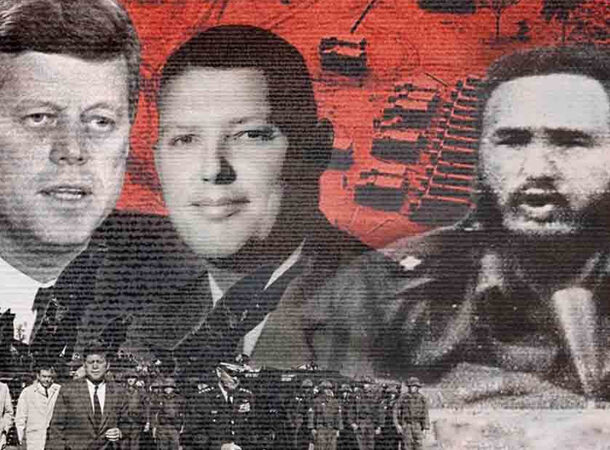 http://www.pbs.org/wgbh/amex/rfk/peopleevents/e_mongoose.html
http://www.pbs.org/wgbh/amex/rfk/peopleevents/e_mongoose.html In the aftermath of the botched invasion of Cuba, the Agency’s public image worsened. Kennedy famously said he would break the CIA into little pieces and scatter it to the wind (shortly before being assassinated, but we digress). But when it came to dealing with Cuba, he turned to the only person he knew he could rely on – his brother, Robert, who was in charge of Operation Mongoose – or the assassination of Castro.
The Department of Defense collaborated with the CIA on this project under Robert F. Kennedy’s supervision. Among the dozens of ridiculous assassination schemes offered were infecting Castro’s scuba gear with tuberculosis, putting exploding seashells at a favorite diving spot, slipping him a poisoned fountain pen, and even poisoning or inserting a bomb into one of his cigarettes. According to Castro’s bodyguard, there were hundreds of CIA plots on Castro’s life, all of which failed, resulting in a massive waste of time and money.
The Secret Multinational Organization That Went Rogue
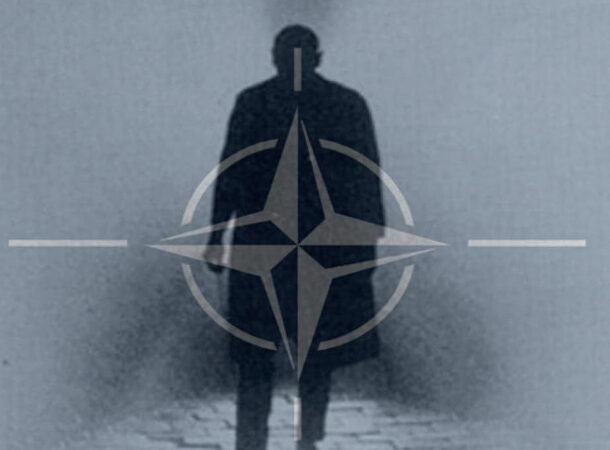 https://www.cia.gov/library/center-for-the-study-of-intelligence/csi-publications/csi-studies/studies/vol49no3/html_files/Bookshelf_11.htm
https://www.cia.gov/library/center-for-the-study-of-intelligence/csi-publications/csi-studies/studies/vol49no3/html_files/Bookshelf_11.htm Remember in Mission: Impossible—Ghost Protocol how the chief of MI6 formed a clandestine organization that went rogue and became “supervillainous”? Following WWII, the CIA established at least one such group to resist the Soviet takeover of Europe. To keep the agents supplied, secret equipment caches were built up.
Gladio, the Italian network, finally evolved into a full-fledged terrorist group as a result of their aversion to communism. Although the details are still murky, the Gladio network is acknowledged to be tied to an attempted assassination of the Pope, several terrorist bombings, and even high-level infiltration of the Italian government. The organization was finally shut down after multiple shameful revelations.
The CIA Uses Warships as Black Sites
 https://www.theguardian.com/world/2008/jun/02/usa.humanrights
https://www.theguardian.com/world/2008/jun/02/usa.humanrights In 2008, an article in The Guardian stated that the human rights group Reprieve discovered that the US operated a fleet of “floating prisons” that span the globe. According to Reprieve, the CIA used at least 17 US warships as secret black sites.
Among the ships was the USS Ashland, a Whidbey Island–class dock landing ship that’s 186 meters (610 feet) in length and weighs 16,000 tons. It is home to 500 US Marines. Reprieve believes the ship is linked to a series of kidnappings committed by Kenyan, Somali, and Ethiopian authorities in 2007. According to the article, the US previously revealed that the USS Peleliu and the USS Bataan were also employed as prison ships. Famous inmates aboard the United States’ secret prison fleet include John Walker Lindh, also known as The American Taliban.
The CIA Involvement in the Libyan Revolution
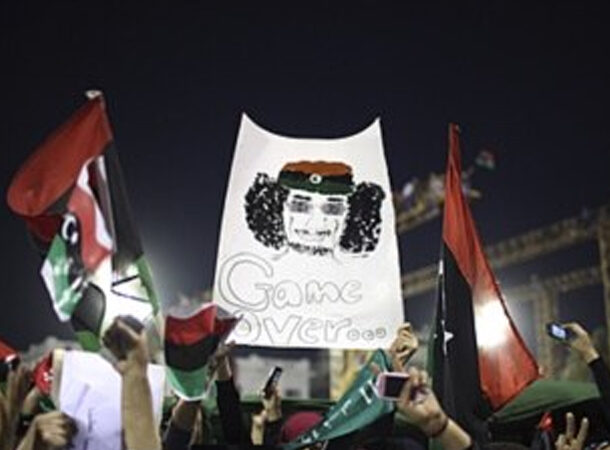 http://www.acus.org/natosource/cia-refutes-benghazi-scandal-acknowledging-covert-operation-libya
http://www.acus.org/natosource/cia-refutes-benghazi-scandal-acknowledging-covert-operation-libya The Libyan Revolution began in February 2011 and ended with the expulsion of Libyan dictator Muammar el-Qaddafi, resulting in his capture and death in October 2011. There was little indication of foreign involvement at the time, but approximately a year later, an incident occurred that cast an interesting light on the entire Revolution.
On September 11, 2012, armed militants attacked an American diplomatic station in Benghazi. The response came not from the mission itself but from a half-dozen CIA officers stationed in the city. More reinforcements arrived from Tripoli, and diplomatic staff were transported by convoy to aeroplanes that flew them out of the country. This revealed the existence of a previously unknown CIA presence in the city. The Agency was obliged to disclose that it had maintained a reasonably robust presence in Libya since roughly February 2011, right around the start of the Libyan Revolution. Following the tragedy at the mission, the annexe that had housed the covert base was cleaned and abandoned.
The Phoenix Program
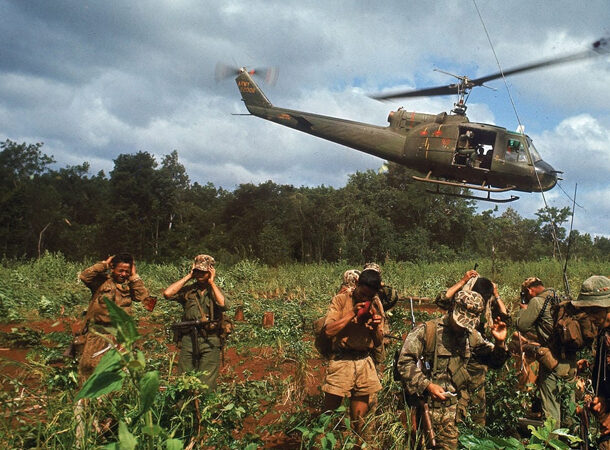 http://www.globalsecurity.org/intell/ops/vietnam-phoenix.htm
http://www.globalsecurity.org/intell/ops/vietnam-phoenix.htm During the Vietnam War, the CIA oversaw the Phoenix program, coordinated by US Special Forces and Australian and South Vietnamese commandos. Its goal was straightforward: assassination. And, even though this was a military unit, their targets were civilian – rather than military.
From 1965 through 1972, the Phoenix Program was involved in the abduction, torture, and assassination of tens of thousands of people. If you were deemed critical to the Viet Cong’s infrastructure or thought to have knowledge of VC activities, you were rounded up and taken to regional interrogation centres, where you would be subjected to sexual assault, the water treatment, or the airplane, a torture method in which the prisoner’s arms were tied behind his or her back, the rope looped over a hook on the rafters – suspending the prisoner in midair – after which he or she was beaten. The program was phased out after negative publicity, but a replacement program, F-6, slowly replaced it. Its former members defined it as a sanitary, depersonalized murder program.
The CIA’s Programs in East and Southeast Asia
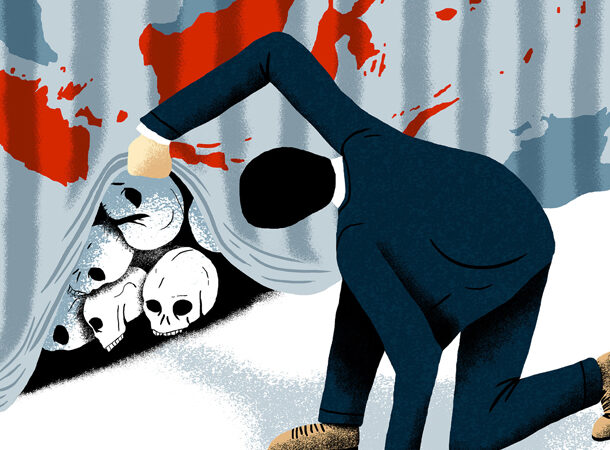 https://youtu.be/Vx_2L_eYVjU
https://youtu.be/Vx_2L_eYVjU In the 1980s, former CIA case officer Ralph Walter McGehee publicly shared his extremely critical views on his former agency with the world based on his time in East and Southeast Asia.
According to Mr McGehee, the CIA suppressed his information on significant communist support in northeastern Thailand. He realized that the Communist Party was developing “a mass-based revolutionary movement” rather than intimidating the masses into submission. He also began to suspect that the CIA was purposefully falsifying intelligence to serve the White House’s political goals, increasing support for the Vietnam War even as the situation worsened. One of McGehee’s most significant charges was the CIA’s complicity in the 1965-1966 Indonesian mass killings, which killed close to one million people and specifically targeted members of the Communist Party of Indonesia (PKI) and their supporters.
The CIA later censored his claim.
The CIA and the Mujahideen
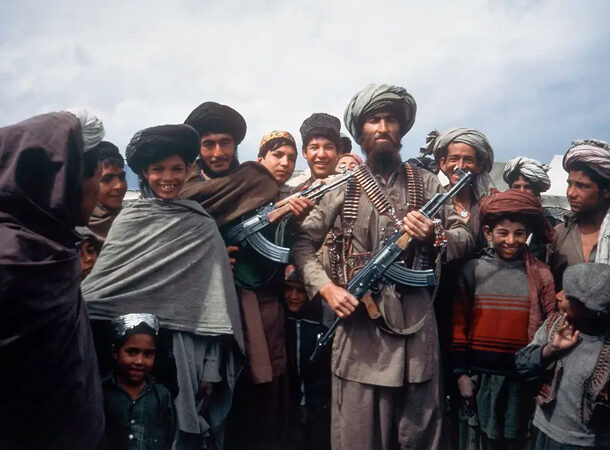 http://www.globalresearch.ca/sleeping-with-the-devil-how-u-s-and-saudi-backing-of-al-qaeda-led-to-911/5303313
http://www.globalresearch.ca/sleeping-with-the-devil-how-u-s-and-saudi-backing-of-al-qaeda-led-to-911/5303313 Afghanistan got embroiled in a civil war in 1978 when two Communist groups gained control of the country. When it looked like anti-Communist rebels were getting the upper hand, the Soviet Union invaded the country to provide support. That’s when the US, of course, decided to intervene.
The CIA established camps to train the Mujahideen, or rebels, in the vital strategies for defeating the Soviets. Advanced weapons were also included most notably Stinger surface-to-air anti-aircraft missiles. The Soviet Union controlled Afghanistan virtually until its collapse in the early 1990s, but the Mujahideen’s legacy lingers on. Today, the CIA’s own techniques and training are being used against them by Mujahideen veterans who have started their own training programs, creating highly trained and skilled terrorists who now form the backbone of Al-Qaeda and other extreme groups.
Project 1794
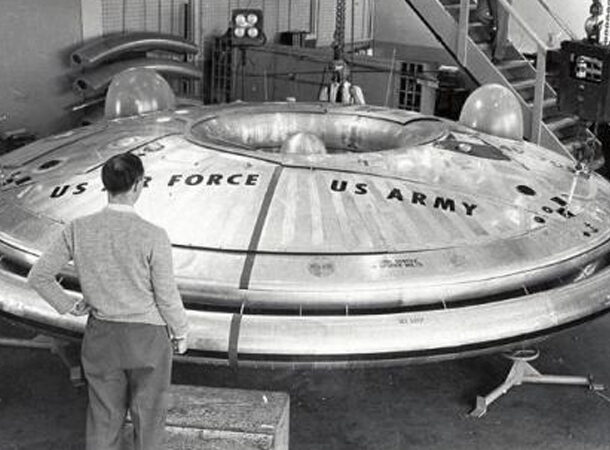 https://youtu.be/aFoSYntvFVk
https://youtu.be/aFoSYntvFVk Are UFO’s American spacecraft? It is definitely plausible. A now declassified image of a United States Air Force aircraft on the drawing board in the 1950s looks suspiciously like a flying saucer. The craft would have been powered by a central turbine engine situated in the centre of its disk-shaped body, and it was designed to hover, streak off at incredible speeds, skyrocket upward, and change direction abruptly.
These crafts would have been produced during Project 1794 and could travel at supersonic speeds at high altitudes. In fact, its specifications call for it to be able to reach a speed of Mach 4 and a height of 100,000 feet (30,480 meters). It had to be lightning-fast because its duty was to shoot down Soviet bombers. The Pentagon was banking big on the saucer-shaped aircraft, allocating $3 million to develop a prototype. However, the project was discontinued in 1961 after tests revealed that the flying saucer shape was aerodynamically unstable and likely uncontrollable at high or supersonic speeds.
The Spy Animals
 https://royalexaminer.com/the-tragic-tale-of-the-cias-spy-craft-cat/#:~:text=In%20the%20early%201960s%2C%20the,people%20to%20eavesdrop%20on%20them.
https://royalexaminer.com/the-tragic-tale-of-the-cias-spy-craft-cat/#:~:text=In%20the%20early%201960s%2C%20the,people%20to%20eavesdrop%20on%20them. During the 1960s, the CIA looked at using animals such as ravens, pigeons, and cats for surveillance. Cats, naturally curious creatures, were considered the perfect spies for the United States’ Project Acoustic Kitty. The felines could be implanted with recording devices, with their apparent wanderings guided by aural cues. With cats recording Soviet officials, conversations would no longer be covert.
The concept may appear entertaining, but it was horrific. According to Victor Marchetti, a former CIA director’s assistant, the cats were sliced open, wired up and filled with batteries. The CIA created a monstrosities. Developing advanced technology at the time was no easy undertaking, and the project took five years to complete, including time spent testing the equipment on “dummies and live animals.” The experiment appeared doomed from the start: the first cat deployed was killed as it crossed a street and was hit by a taxi cab. The cats’ career as spies ended in 1967, when the CIA admitted that, despite deploying a $20 million feline radio transmitter, cats really don’t take direction well.
The CIA Ratted Out Nelson Mandela
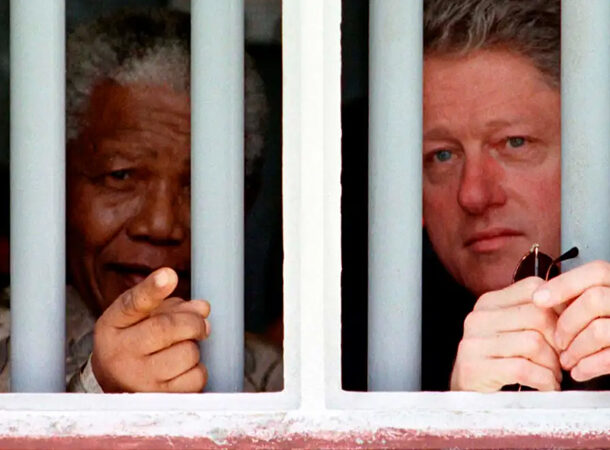 http://www.wsj.com/articles/SB10001424127887324461604578191683590816070
http://www.wsj.com/articles/SB10001424127887324461604578191683590816070 In 1962, South African authorities apprehended Nelson Mandela, a leading anti-apartheid African National Congress (ANC) figure. He famously spent the majority of the following three decades in prison, practising nonviolence and becoming a global icon in the process. Which might be uncomfortable for the CIA, given that they tipped off the South Africans on where to find Mandela, who was disguised as a chauffeur when he was captured.
At the time, the US government supported apartheid as a buffer against communism in Africa. The CIA’s Pretoria station chief, Paul Eckel, was claimed to have told a friend in 1990 that the agency had handed Mandela over to the South African Intelligence Branch. According to him, they gave them every detail, including the time of day, what he would be wearing, and where he would be, going so far as to call it “one of our greatest coups.”
Operation Condor
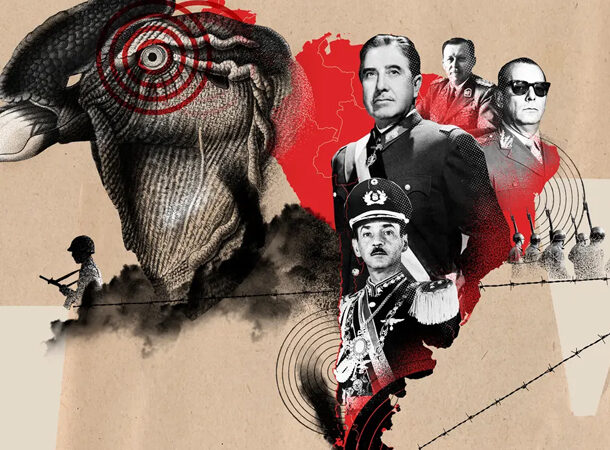 http://www.bbc.co.uk/news/magazine-20774985
http://www.bbc.co.uk/news/magazine-20774985 When a stockpile of documents related to Operation Condor was discovered at a rural police station in Paraguay, it soon became known as the “archive of terror.” Within the 700,000 pages, investigators found proof that the intelligence agencies of Paraguay, Argentina, Chile, Bolivia, Uruguay, and Brazil had engaged in the torture, murder, and bombing of enemies as far away as Washington, DC and Rome. For more than a decade, Latin American dictators and military juntas ran a sophisticated terror network to eradicate any and all opposition with ruthless efficiency – a horrific system they concealed from the rest of the world with the help of the CIA.
According to the archives, the CIA was definitely aware of Operation Condor by the mid-1970s but chose not to notify the public or get involved. You may argue that it was not any of their business, but their intelligence also contained stories of Nazi war criminals hiding in South America and the assassination of Israeli operatives pursuing them. It was significant news that the Agency intentionally disregarded.
Operation Mockingbird
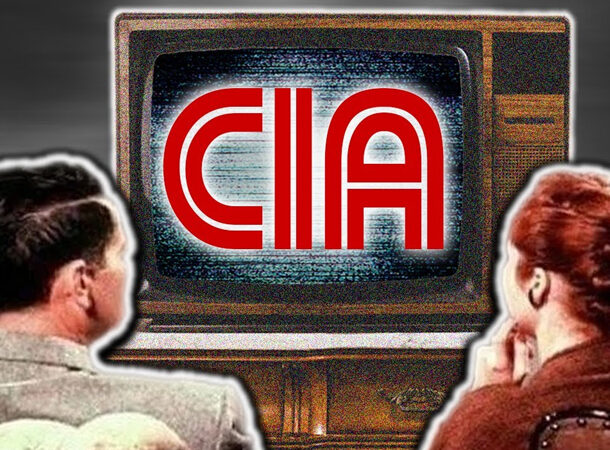 https://libertywingspan.com/52879/uncategorized/operation-mockingbird/
https://libertywingspan.com/52879/uncategorized/operation-mockingbird/ Operation Mockingbird used a two-pronged approach to control the media: on the one hand, journalists were often employed by the CIA to compile intelligence and collect information or provide commentary on specific events in a way that portrayed the US in a positive light. On the other, there were literal “plants” within the media, bought with bribes and even directly employed by the CIA to feed disinformation to the American people.
This program was primarily intended to persuade the public of how terrifying Communism was and to ensure that public opinion supported the eradication of the Red Menace at all costs. Even more concerning was the fact that having major newspaper publishers and TV station executives bought and paid for meant that important overseas events could be excluded from media coverage – as such, many important foreign events didn’t feature in the American media at the time.
Operation CHAOS
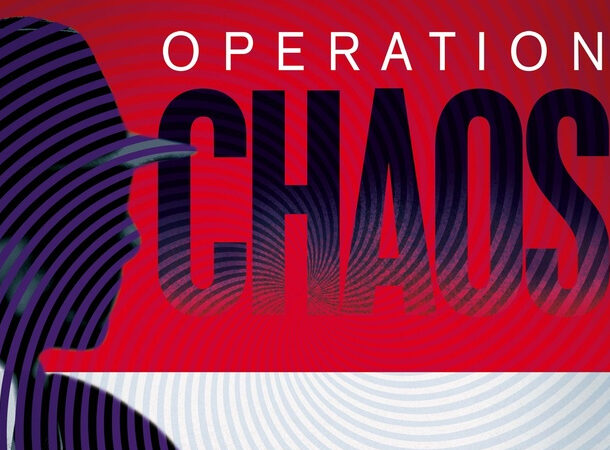 https://www.history.com/news/cia-surveillance-operation-chaos-60s-protest
https://www.history.com/news/cia-surveillance-operation-chaos-60s-protest Protests against US engagement in Vietnam were causing a major stumbling block for the government’s goals in the mid-1960s. While Mockingbird was busy applying the mainstream to force the need for war down the public’s throat, the “counter-culture” was harder to control. Aware of the KGB’s proclivity for dirty tricks, the CIA launched Operation CHAOS to find and filter out foreign influence on the anti-war movement in the US – and they didn’t even come up with an innocent-sounding code name.
Because the FBI’s COINTELPRO domestic surveillance program was not providing the expected results, President Lyndon B. Johnson instructed the CIA to launch its own program to spy on Americans. Their main task was infiltrating student organizations – “Students For a Democratic Society” and the Black Panthers were both targeted – and later expanded to include women’s liberation and certain Jewish groups. CHAOS was ultimately shattered by the Watergate scandal, but there is substantial evidence that this type of activity has never ceased.
The CIA Found A Real-Life Superhuman
 https://www.cia.gov/readingroom/docs/CIA-RDP96-00792R000200650002-3.pdf
https://www.cia.gov/readingroom/docs/CIA-RDP96-00792R000200650002-3.pdf When the CIA learned that a Chinese guy named Zhang Baosheng had supernatural abilities, they wanted to test him. Zhang Baosheng claimed to be able to transfer objects through walls without breaking them. He was tested in both America and China, and the scientists recorded everything.
In one experiment, investigators placed drug tablets into a sealed bottle and asked Zhang to remove them. Zhang fixed his gaze on the bottle. It began to shake so violently that the tablets snapped in half. Then, all of a sudden, without breaking the seal, every tablet was outside of the bottle. They videotaped him using a 400-frame-per-second camera. When they slowed the film down, they discovered a single 1/400th of a second picture that showed a tablet sticking halfway out the side of the bottle, passing through the glass without breaking it. The CIA concluded that the experiment demonstrated Mr. Zhang Baosheng’s paranormal abilities.
The CIA Made Use Of Prostitutes To Test The Effects Of LSD on Unsuspecting Men
 http://ahrp.org/1953-1964-operation-midnight-climax-cias-lurid-ventures-into-sex-hookers-and-lsd/
http://ahrp.org/1953-1964-operation-midnight-climax-cias-lurid-ventures-into-sex-hookers-and-lsd/ During the early days of the Cold War, the CIA became convinced that the communists had devised a drug or unique method to control human minds. In response, the CIA launched MK-ULTRA, a secret program to find their own mind-control drug that could be weaponized against US enemies. One way the CIA tested LSD was with Operation Midnight Climax, an operation that truly lived up to its name.
The CIA set up a brothel and paid women $100 to lure unsuspecting “Johns” inside. Once there, the guys were given LSD-laced vodka and led to a bed adjacent to a one-way mirror, with operatives on the other side watching. Officially, the CIA was putting the prostitutes through their paces to see if they could become undercover operatives. They wanted to know if they could extract information from a target through sex and drugs. Unofficially, however, it was simply an excuse for CIA agents to have fun with the consent and blessing of the government.
The Missing Family Jewel
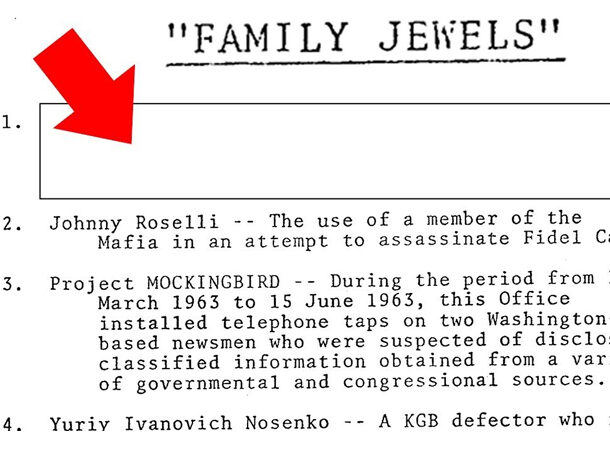 http://www.foia.cia.gov/collection/family-jewels
http://www.foia.cia.gov/collection/family-jewels In 1973, Director James Schlessinger instructed Deputy Director William Colby to produce a record of all CIA initiatives since 1959 that may have broken the law or the agency’s charter. Colby assembled a loose-leaf packet containing over 700 papers called “the Family Jewels.” The Jewels include Yuri Nosenko’s three-year captivity, domestic surveillance activities by CIA agents, and the agency’s renowned efforts to assassinate Castro and other foreign leaders.
The complete document was finally released in 2007, providing a fascinating insight into the CIA’s most notorious operations. At least almost all of them. That’s because one of the most prominent jewels remains redacted. A memo from CIA Director of Security Howard Osborn lists the Jewels related to his department. The second Jewel on the list explains how the CIA used the Mafia in their attempts to assassinate Fidel Castro. However, the first item on the list remains concealed. So is a later portion that goes into greater depth about the redacted operation. So, what is the missing Jewel? We’ll probably never know – but it must be really good.



























